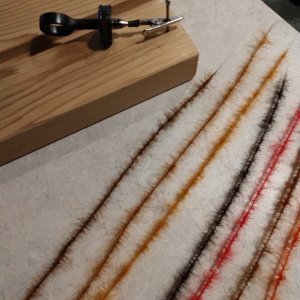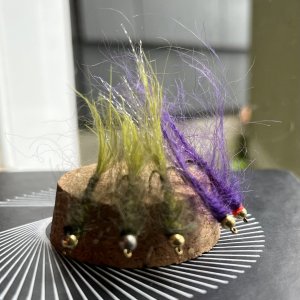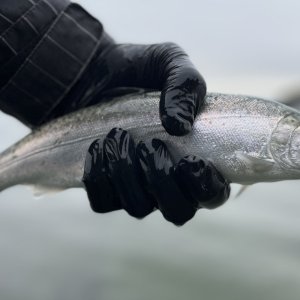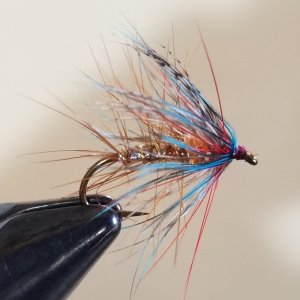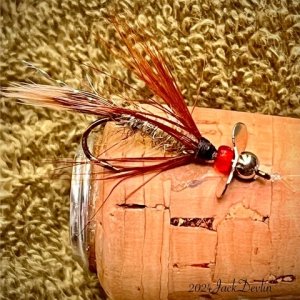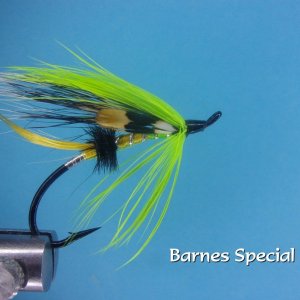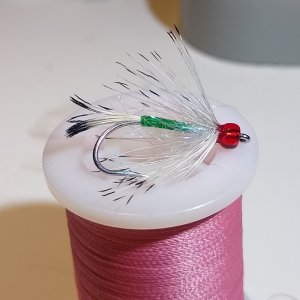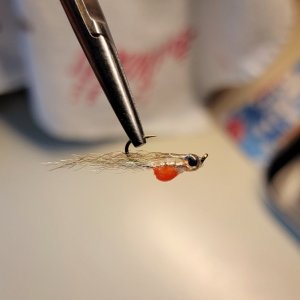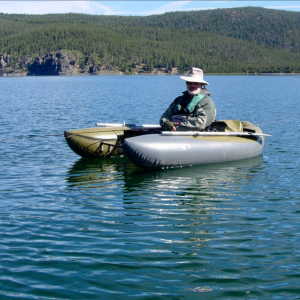I'm sure we've all had the experience (and occasional frustration) of fishing with a friend who is having a very productive day who kindly loans you one of the very same flies....only to find it's simply not working for you, despite your attempt to mimic your buddy's presentation in every respect.
In another thread Ive (@iveofione) mentions a zipper-lip lake we fished a few days ago in which we both enjoyed a truly phenomenal day of fishing, filled with an astounding number of strikes, LDRs, and nettings, including some very heavy-bodied trout. The experience illustrates well the very significant role presentation plays in flyfishing success.
We all heavily rely upon a few go-to patterns, usually only switching to something else when that fly's not producing...or even more commonly changing lines and locations, often with the same trusty fly to get it in whatever zone they're feeding.
On that particular day I was fishing a rusty brown leech with a red glass bead head......first on an intermediate line, which was working pretty well but the rate of hookups drastically increased when I switched to a faster sinking line (same fly) because I was marking hordes of fish in the deeper parts of the lake.
Ive was fishing a 'Flash-Back' (a variation of his beloved Half-Back) and enjoying an equally productive day. I witnessed his catch of an awesome (sorry Ive!) fat twenty-incher, and many times we both had fish on at the same time.
Years ago he gave me a few of his Half-Backs and I now have tied a few for the flybox arsenal but I've had very limited success with the pattern even when attempting to mimic what that very cagey fisherman is doing. It simply doesn't seem to work for me.
On this particular day I gave Ive a couple of the same leeches that were providing such epic fishing...and they produced zilch so he went back to catching fish with what was working so well for him. I think this very aptly illustrates how very subtle (perhaps even deeply ingrained subconscious) differences in presentation are why certain patterns become our very personal go-to flies, while the others mostly stay benched in the flybox on all but the most desperate days of slow fishing. I also think this phenomena is why those same trusty flies continue to catch fish even when battered beyond nearly any semblance to their initial appearance...due to the power of presentation.
In another thread Ive (@iveofione) mentions a zipper-lip lake we fished a few days ago in which we both enjoyed a truly phenomenal day of fishing, filled with an astounding number of strikes, LDRs, and nettings, including some very heavy-bodied trout. The experience illustrates well the very significant role presentation plays in flyfishing success.
We all heavily rely upon a few go-to patterns, usually only switching to something else when that fly's not producing...or even more commonly changing lines and locations, often with the same trusty fly to get it in whatever zone they're feeding.
On that particular day I was fishing a rusty brown leech with a red glass bead head......first on an intermediate line, which was working pretty well but the rate of hookups drastically increased when I switched to a faster sinking line (same fly) because I was marking hordes of fish in the deeper parts of the lake.
Ive was fishing a 'Flash-Back' (a variation of his beloved Half-Back) and enjoying an equally productive day. I witnessed his catch of an awesome (sorry Ive!) fat twenty-incher, and many times we both had fish on at the same time.
Years ago he gave me a few of his Half-Backs and I now have tied a few for the flybox arsenal but I've had very limited success with the pattern even when attempting to mimic what that very cagey fisherman is doing. It simply doesn't seem to work for me.
On this particular day I gave Ive a couple of the same leeches that were providing such epic fishing...and they produced zilch so he went back to catching fish with what was working so well for him. I think this very aptly illustrates how very subtle (perhaps even deeply ingrained subconscious) differences in presentation are why certain patterns become our very personal go-to flies, while the others mostly stay benched in the flybox on all but the most desperate days of slow fishing. I also think this phenomena is why those same trusty flies continue to catch fish even when battered beyond nearly any semblance to their initial appearance...due to the power of presentation.
Last edited:


